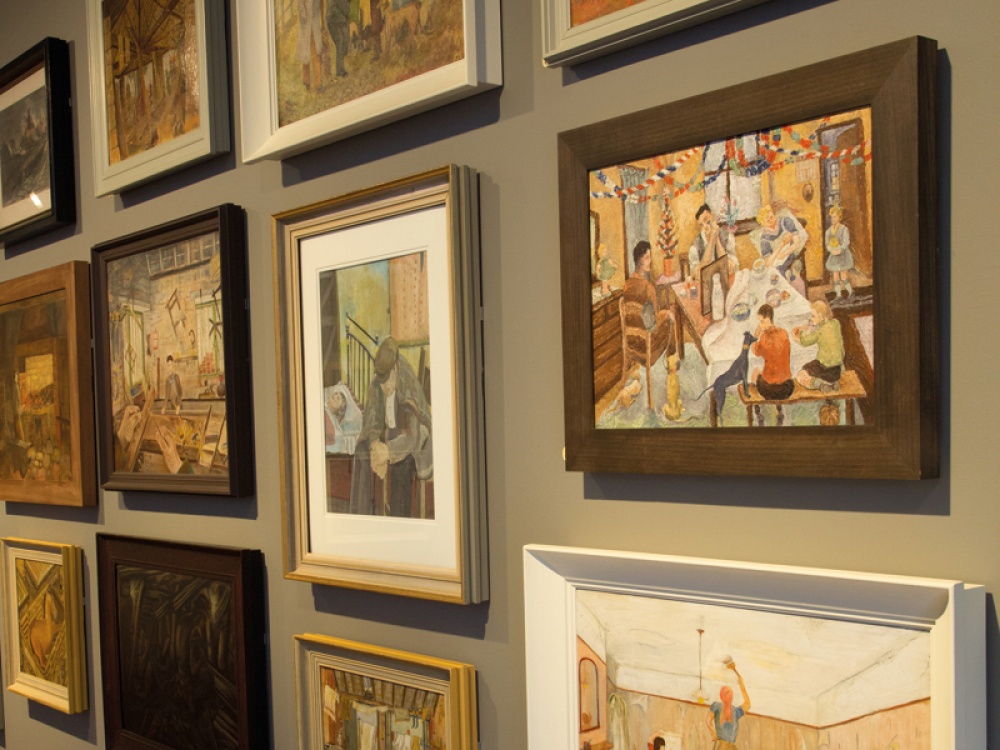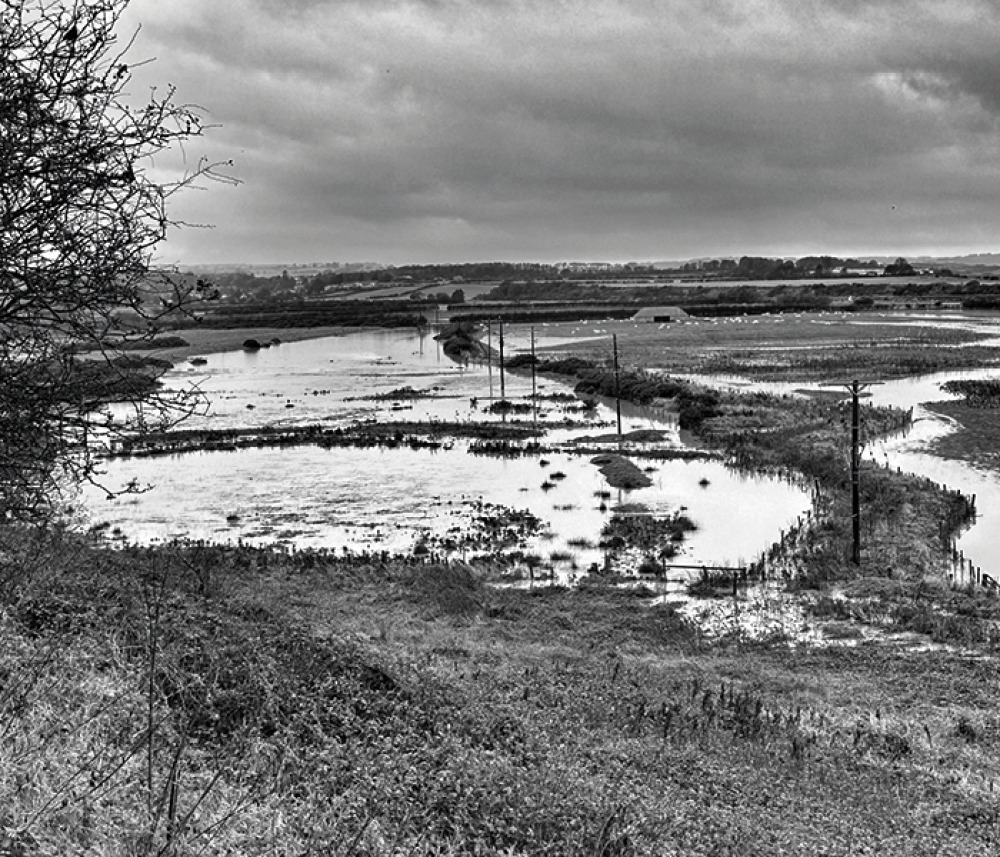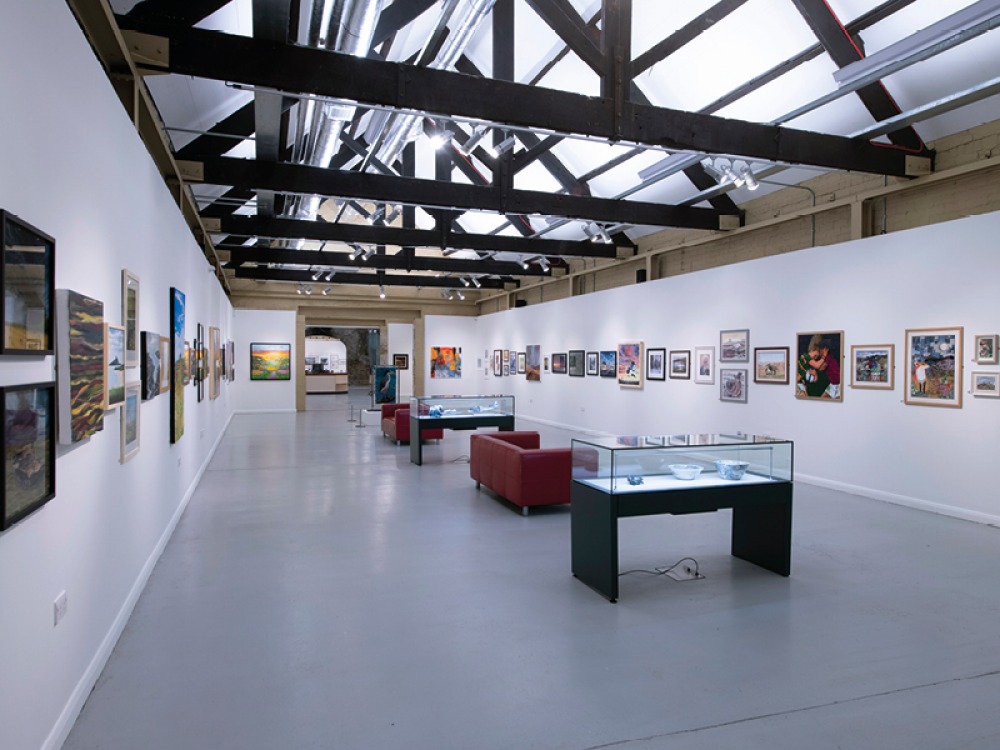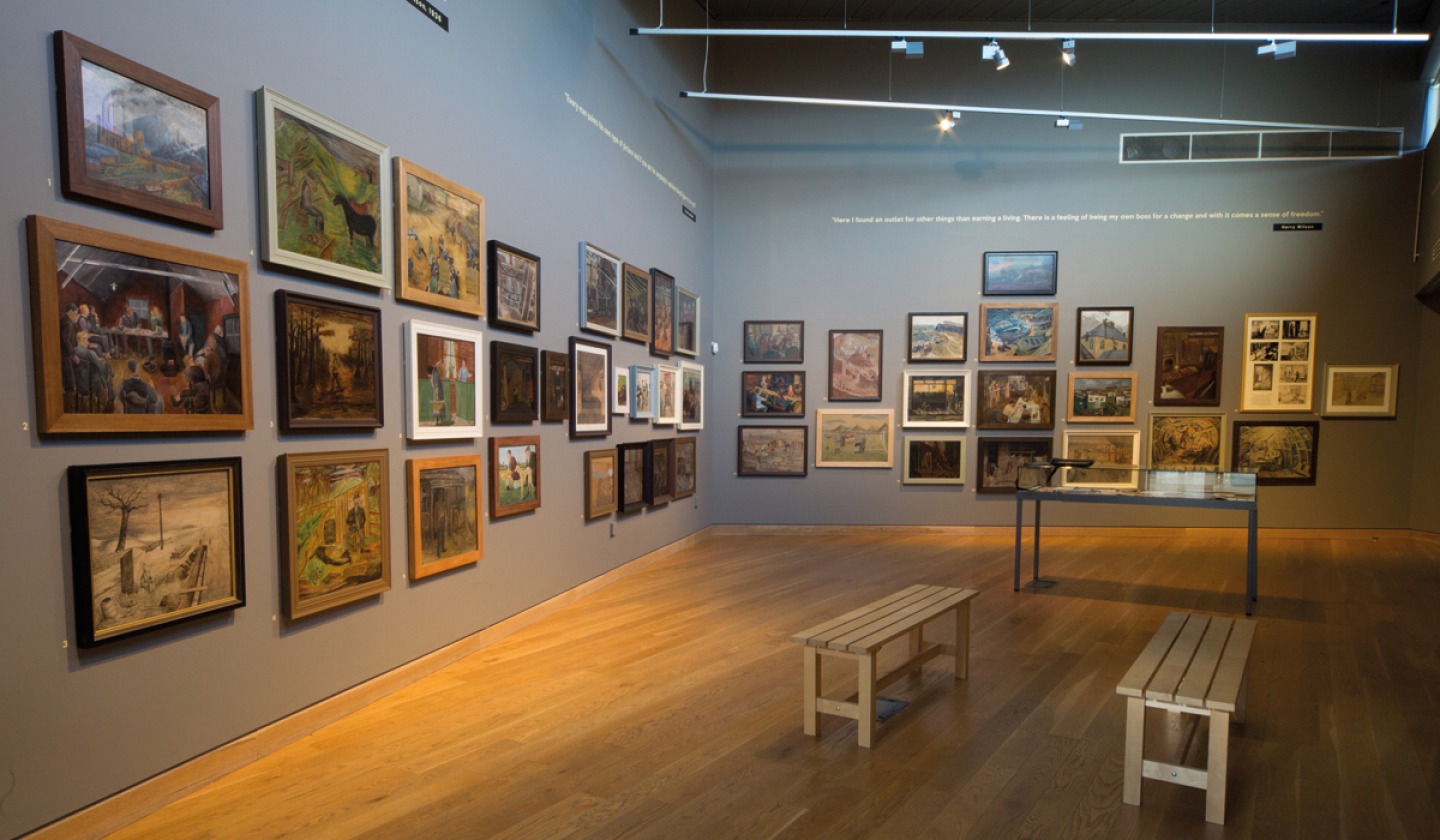How the Northumberland Open 2024 is Celebrating the 90th Anniversary of the Ashington Group

The annual Northumberland Open is the largest exhibition of its type in the county - and it's back for 2024!
Each year the Northumberland Open Exhibition (housed in Woodhorn Museum’s Workshop Galleries in Ashington) attracts submissions from artists from across the county and beyond. Works are selected by a professional panel of artists and curators who also select an overall winner and artists to be awarded prizes, and thousands of visitors vote for the ‘People’s Choice’ award which is announced at the end of the exhibition.
‘It’s the most popular exhibition we host annually, and it’s phenomenal to have so many contributors from right across Northumberland and beyond,’ says Rowan Brown, chief executive officer at Museums Northumberland. ‘Some are pretty famous, established artists who have selling careers, and some are those who do it in their spare time, but everyone is judged anonymously so the outcome is really special. It’s distinctly Northumbrian in flavour, but it’s always really diverse. There’s always a number of different media, from sculptures to film pieces to costumes, as well as paintings and etchings. It’s lovely to be able to share what Northumbrians really think of themselves with each other. The fact that anybody can submit work is something that we’re really proud of.’
Read More: Northern Art Galleries to Visit This Winter

The Ashington Group (often referred to as Pitmen Painters) were miners in south east Northumberland who came together as a Workers’ Educational Association (WEA) class in 1934 to learn about Art Appreciation. They documented their own lives for around 50 years and had international success, with exhibitions as far away as China and their story inspired Lee Hall’s famous play The Pitmen Painters. Visitors to Woodhorn Museum can see a permanent collection of their paintings in The Ashington Group Gallery and this year marks the 90th anniversary of the formation of the Group. In celebration, the theme for 2024’s Open Exhibition is ‘Northumberland Now’.
‘The beauty of what the Ashington Group gave us was a way of improving lives through art and a way of seeing their contemporary world through a painterly lens,’ says Rowan. ‘It doesn’t really matter what your level of talent is, anybody can get joy from engaging with the world through art.’
Hartlepool-born Narbi Price is a painter, lecturer and curator and holds a PhD from Newcastle University looking at the legacy of The Ashington Group and the post-industrial landscape of Northumberland. He’s an Ashington Group trustee and is part of the selection panel for this year’s Open Exhibition. ‘The PhD naturally led to a continued interest in the care of this unique collection,’ he tell us. ‘My own paintings are about history, and the specific events that happened in particular places.
‘There was a huge range of different approaches, mediums and interpretations among this year’s hundreds of submissions. There are quiet, contemplative paintings, bombastic sculptures, multimedia and photographic works. We tried to demonstrate something of the range and diversity of artistic talent that is working in the region. I can confidently say that there’ll be something for everyone.’
The winning piece in this year’s Open Exhibition is Northumberland Flood Plain by Jim Donnelly – a large, dramatic monochrome photograph showing a flooded landscape. ‘Its portrait format hints at a modernity, referencing the way that much photography is made due to the ubiquity of mobile technology,’ says Narbi. ‘There’s a rich all over level of detail that rewards consideration – we can place ourselves in that threatened landscape, and feel the transient vulnerability of it.’
Narbi says the Ashington Group collection is so important because it is completely unique. ‘There is no other example of workers documenting their own changing lives from an insider’s point of view for so long in the entire world,’ he says. ‘It is a powerful document of a bygone industry and way of life, as recorded by those who lived it.’
The Northumberland Open Exhibition marks the start of a year-long programme of exhibitions and events celebrating the Group’s legacy. Founding member Oliver Kilbourn’s My Life as a Pitman will be shown in its entirety for the first time in a decade and in autumn visitors can enjoy a major new exhibition, Coalface Drawers, which Narbi is curating. ‘It is a brand-new show focusing on the beginnings of the Pitmen Painters project and bringing artworks and artefacts that have been dispersed for scores of years back together where it all began in Ashington,’ he reveals.

‘It doesn’t really matter what your level of talent is,
anybody can get joy from engaging with the world through art’
‘We’ll be sharing some Ashington works that aren’t normally seen but that are in our collection at Woodhorn Museum and also in private collections around the world,’ Rowan adds. ‘We’re going to have a phenomenal recreated Ashington Group hut where members of our community of any age (but particularly targeted at families) can create their own artistic response too.
‘I hope people get the opportunity to come and see the Ashington Group 90 programme and celebrate the legacy we have. It’s a really positive thing and I think at the moment when times are hard, we really need these examples.’

Your favourite piece from The Ashington Group Gallery?
Rowan: I absolutely love [George Blessed's] Whippets! Mainly because I’m a dog-lover, and a dog-owner, but I also really like the romance around the fact that some theories say that one of the gentlemen in the picture is Jackie Milburn. At the time, he would’ve been pretty young… but it’s a phenomenal picture and it really speaks to that coal mining community experience and our love of animals, particularly in Northumberland.
Narbi: I might have a different answer each time I’m asked, but Fred Laidler’s The Open Drawer keeps me going back. It’s a very matter of fact painting that, as the title suggests, shows the open drawer of his work bench (he was a carpenter/joiner), and the understanding of the subject matter is plain to see in the handling of the paint. There’s also a work in this year’s Northumberland Open that reimagines it very wittily for the 21st century.
A hidden gem in Northumberland?
Rowan: It’s one of our other museums – Berwick Museum and Art Gallery. We recently displayed a tiny piece of Anglo-Saxon gold [The East Ord Cross] that we now believe was owned by the last Bishop of Lindisfarne. It’s so rare and about 1,000 years old. It was only discovered by a metal detectors in 2019 so it’s been a very hidden gem!
Narbi: Bear Claw Brewery is a microbrewery in an old pig processing yard in Berwick that ferments all of their beer in ex-wine casks. They’re open for a tap day every Saturday and you can enjoy some of the most interesting, tasty beer you’ll have had, whilst seated among the oak barrels.
A part of Northumberland’s history we might not know?
Rowan: One of the things I absolutely love about the coast in Northumberland is the fossil finds, and the fact that you can experience the world as it was hundreds of millions of years ago. But one thing people might not know is that in 2012 there was an excavation on the Tweed and they found a fossil that is one of the oldest living fossils of life migrating from sea to land – a monumental evolutionary step took part in our county.
Your thoughts on the North East art scene?
Rowan: It’s really magical! I grew up in Glasgow where there’s a long history of art collections and a really thriving contemporary art scene. There’s an absolutely brilliant contemporary art scene in Northumberland. We’ve got a show on at the moment which is Jamie Sinclair’s film piece, Hjem – it’s a poetic, beautiful film about how the Northumberland County of Sanctuary welcomed refugees. That’s a poignant contemporary piece. At Museums Northumberland we’ve worked with some brilliant artists – Bethan Maddocks and Narbi Price [for example]. In terms of that historic talent one of my favourite pictures whilst growing up in Glasgow was by Joseph Crawhall and of course he’s a Northumbrian artist. There’s phenomenal talent here past and present – and future, I’m sure.
Narbi: I think it’s getting better all of the time, but it’s a slight misnomer that there is one North East art scene. Like anywhere else, it is a rich patchwork of interconnected activities. No two artists are alike, and whilst we are all beavering away at our solitary obsessions, we also are part of a wider thing, and never too many steps removed from each other. And perhaps there’d be a hole without any one of us.







